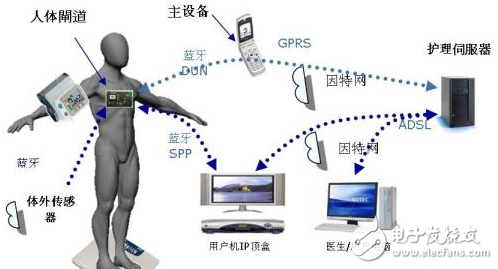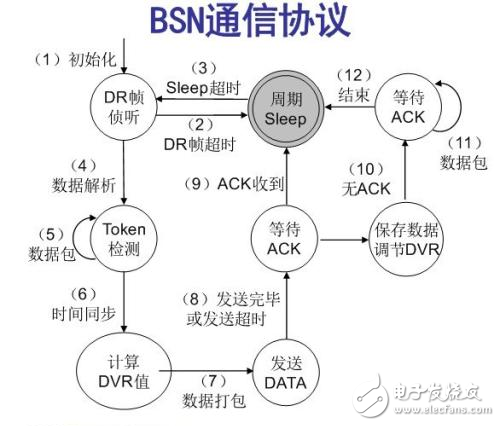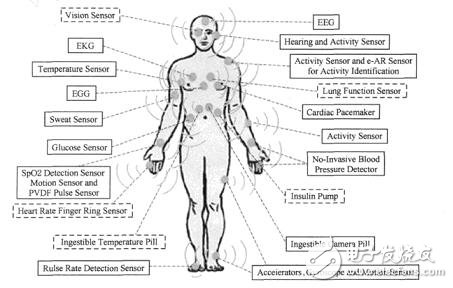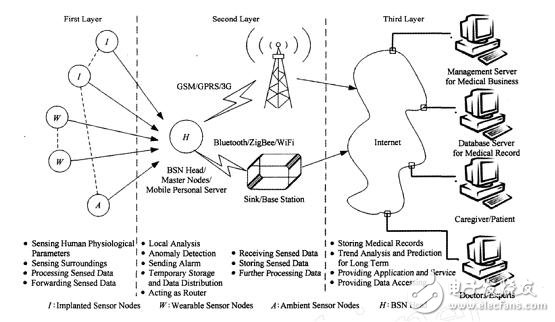Human sensor network: body sensor network, referred to as BSN. BSN is body-centric and integrates multidisciplinary knowledge of biosensors, medical electronics, multi-sensor analysis and data fusion, artificial intelligence, pervasive sensing, wireless communications and other innovative applications.
BSN fully utilizes the advantages of wireless, network and information, and realizes the tracking and service of the whole process of health. It is one of the development directions of low cost and health.
The main feature of BSN is collection and interconnection.
Background of human sensor networkWith the concept of “prevention first†deeply rooted in people's minds, the remote collection and processing of health information is an essential means for early detection, early diagnosis and early intervention. Secondly, in order to achieve continuous monitoring without affecting people's normal physiological activities, Traditional wired networks are gradually becoming wireless; moreover, as sensing devices move toward microscale and long-term spans, innovative sensing methods and tools are essential. In view of this, the human sensor network emerged in the context of the Internet of Things, becoming the "end" of the medical Internet of Things and the ubiquitous network (Note: a widespread network) to help solve health and information.
Research hotspots of human sensor networks
Focusing on the research hotspots of BSN, the industry has carried out corresponding research and industrialization work. In general, it is reflected in the following aspects:
(1) In terms of sensors, research and development of new sensing technologies such as electronic fabrics and non-contact electrodes;
(2) At the beginning of the energy harvesting, that is, using the body's own mechanical motion energy or temperature gradient to power the BSN node, etc.;
(3) Conduct research on the BSN semantic model, focusing on the use of mathematical tools such as STSOM and Bayesian networks;
(4) Develop a low-frequency, low-noise, low-power medical integrated circuit chip suitable for BSN by means of single crystal integration;
(5) In terms of wireless communication, focus on the mechanism discussion and technology development of the transmission mode using human body communication;
Module composition of human sensor network(1) Functional modules such as micro antennas, base station boards, and wireless charging;
(2) Physiological parameter measurement nodes such as respiration, ECG, blood oxygen, pulse rate;
(3) a nine-degree-of-freedom inertial measurement node integrating acceleration, angular velocity, and magnetometer;
In general, hardware systems are characterized by miniaturization, low power consumption, and low cost.
The Human Body Sensor Network Software Development Desk (SDK) includes: development board software, wireless communication protocols, baseband design, and data interface definitions. The main technical indicators: wireless transmission data 50kbps; data transmission and reception rate of 10kbPs; interconnection and interoperability agreement. The BSN communication protocol is shown in the figure:

BSN involves key technologies such as medical integrated circuit chips, IP modules and human body communications.
Medical integrated circuit chip and IP module

The integrated circuit design has breakthrough technology advantages such as fully integrated, low power, low cost, high performance, configurable and miniaturized medical integrated circuit chips.
The three generations of human sensor network development platform adopts low frequency, low noise, low power ("three low") design method, single crystal integrated multi-life sign signal amplification, filtering, processing, power management functions. The three generations of human sensor network development platform is shown in the following figure:
Human communication

Traditional communication theory uses the human body as a source of interference. In BSN, in order to achieve low-load and high-reliability life information extraction, the human body needs to be used as a transmission medium to study the information transmission mechanism of the human body channel;
A large number of in-vivo experiments and numerical simulations were carried out in the "real floating" environment, illustrating the carrier frequency (30MHz), modulation and data rate (BPSK, 1-10MSps), energy consumption parameters (1nJ/bit), transmission distance Factors such as security (CapaciTIve Coupling, 1m), organization and channel relationship, motion and channel relationship, interaction of parameters and channel, provide theoretical basis for the research of communication mechanism of next-generation BSN.
The research on the mechanism of cardiovascular and cerebrovascular events requires multimodal health information such as imaging, biochemistry, genes and vital signs. The dynamic detection of vital information and the assessment of cardiovascular and cerebrovascular functions are particularly close:
(1) Dynamic changes in blood pressure are important inducing factors leading to the loss of vulnerable plaques;
(2) ST-T segment ECG abnormality is an important indicator for the diagnosis of early coronary heart disease;
(3) Heart rate variability is an important factor in predicting the occurrence and persistence of arrhythmia;
(4) Abnormal respiratory rate at night is an important risk factor for events such as COPD;
(5) Daytime exercise information is an important means to assess the prognosis of hemiplegia caused by stroke.
Direct Drive Motor,Ex Direct Drive Motor,Direct Drive Motor Sewing Machine,Overlock Sewing Machine Motor
LISHUI SHUANGZHENG MOTOR CO.,LTD. , https://www.szservomotor.com